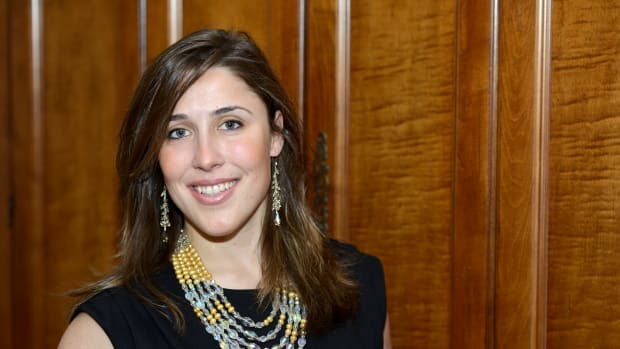The PHF has addressed two major needs this off-season in hiring leadership including new commissioner Reagan Carey and Players Association executive director Nicole Corriero.
While Carey will work to guide the PHF through a crucial summer, which is set to include the expansion of the league by two teams, Corriero will perhaps hold an even more vital role – protecting the needs of the athletes in what is currently North America’s only professional women’s hockey league.
The Harvard graduate, three-time all-American hockey player, and practicing attorney knows there is much to be done to secure a sustainable future for the players she now represents.
“On an internal basis, there are things we can do to bolster the infrastructure and create a well-oiled machine within the Players Association, putting in place proper tools to support the players,†said Corriero of her early focus.
“We also need to ensure the players have a voice, they’re part of the conversation with the league and management, and that we have the opportunity to communicate about what the league is proposing moving forward,†she added, pointing to compensation and day-to-day logistics as points of ongoing discussion among player representatives and the league.
Corriero has been working behind the scenes since before the Boston Pride won their second consecutive Isobel Cup, although the announcement of her hiring didn’t come until after the PHF playoffs concluded. As a former hockey standout herself, Corriero has actively followed the development of professional women’s hockey and is focused on building a better future for the game.
One immediate hurdle the league and players faced this off-season was a new format for free agency and abolishing the PHF draft. The decision to make all PHF players unrestricted free agents as of May 1, and to do away with the draft, was made in consultation with the players in order to best meet their evolving needs.
“It was meant to streamline things,†Corriero said of the decisions. “We need to be mindful of where the league is at, at this point in time, and give players, both current and potential players who are graduating that freedom of choice. We didn’t want someone to get drafted by a team in a city they have no intention of living or creating their life in.â€
As Corriero stated, the mutual goal of the Players Association and the league is to create a salary structure where the logistics of geography are no longer a concern, but in the meantime, allowing free player movement was something Corriero said: “empowers players to have the ability to sign where they want and play where they want.â€
One issue entering free agency, however, remains. This issue is the absence of an announcement from the league regarding the location of two promised expansion franchises, growing the league from six teams to eight in time for next season. In order to support the discussed freedom, and empower choices that meet the needs of players, transparency between the league and players regarding the location of the new teams is necessary, especially with free agency already underway.
“The league is very cognizant of the fact that time is of the essence. These details are needing to be finalized,†said Corriero, who added she’s been assured that decisions will come in the near future.
In the meantime, Corriero is focused on building relationships between the athletes she represents and the PHF Players Association to foster trust and support.
“For me personally, it’s a focus to make sure I’m fostering relationships not just with the player representatives, as I’m already developing rapport with them, but to make myself known among the players themselves and really make them feel comfortable to come to me or to come to the Association as a whole to speak freely, feel safe, and to know we’re genuinely on their side,†she said.
Corriero acknowledged that the Players Association is starting with a “blank slate†and that the league will still experience change as developments occur over the next twelve months. This includes expansion, as well as the potential for a competing league in 2023 from the Professional Women’s Hockey Players Association.
While Corriero has listened to the conversations and followed the discussions related to the PHF and PWHPA as they developed, she sees a viable future for both groups and views the presence of two potential leagues as a positive for the sport.
“There is this genuine sentiment from our players, who are doing their best to create the best possible league and best possible player experience, and they are wishing the other group all the best,†she said of the PHF players’ views toward the PWHPA.
“If there are at some point two of these distinct professional leagues, there are a lot of positives that could come from this as a natural byproduct that stems from competition.â€
In the eyes of the PHF, this could also involve collaborative agreements in terms of player transfers, or potentially player loans as often occur in professional soccer leagues.
“If the leagues are not in the position to necessarily operate under the same umbrella, I don’t see any setbacks or downside to the leagues still trying to be collaborative to the extent that they can in terms of serving the players,†said Corriero.
Regardless of the divide, which culminated in the PWHPA deciding to walk away from potential collaboration following a meeting between the groups and the NHL this year, the goal for both professional women’s hockey groups remains common – grow the game.
“I think the uniting, driving force for everybody is wanting to bring the women’s game to the next level,†said Corriero. “We’re all united in terms of that.â€



